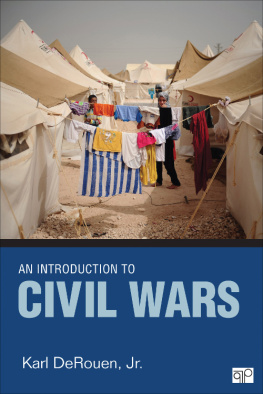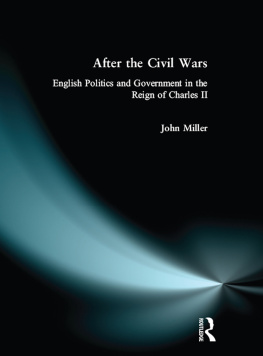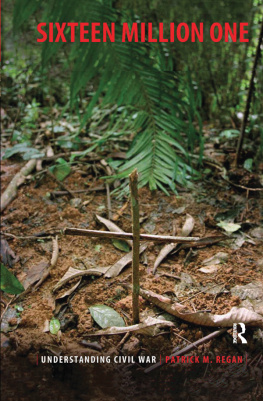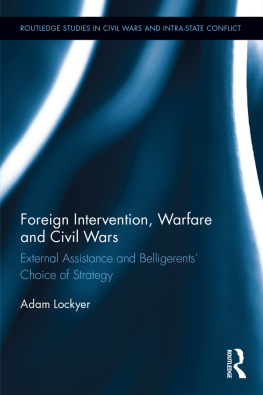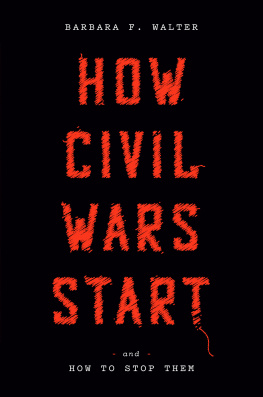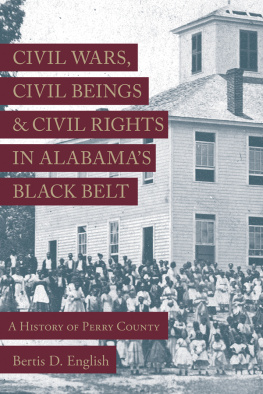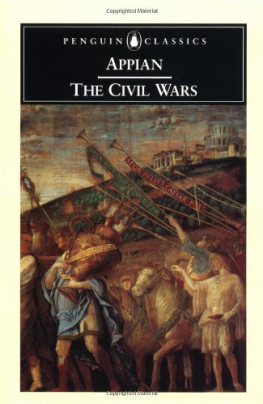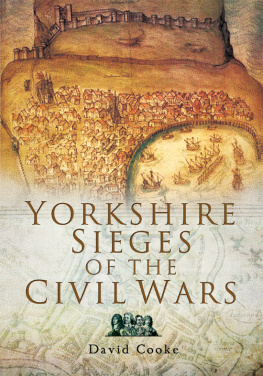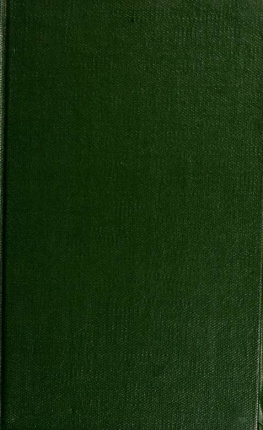To my grandfather Fernand Joseph DeRouen Sr. (18981981)
and my son Fernand Jacques DeRouen
Copyright 2015 by CQ Press, an Imprint of SAGE Publications, Inc. CQ Press is a registered trademark of Congressional Quarterly Inc.
All rights reserved. No part of this book may be reproduced or utilized in any form or by any means, electronic or mechanical, including photocopying, recording, or by any information storage and retrieval system, without permission in writing from the publisher.
Printed in the United States of America
Library of Congress Cataloging-in-Publication Data
DeRouen, Karl R., 1962
An Introduction to civil wars / Karl DeRouen, Jr.,
University of Alabama.
pages cm
Includes bibliographical references and index.
ISBN 978-1-4522-4432-7 (pbk. : alk. paper)
1. Civil war. 2. Conflict management. 3. Peace-building.
4. Intervention (International law) I. Title.
U21.2.D338 2015
303.64dc23 2014011890
This book is printed on acid-free paper.
14 15 16 17 18 10 9 8 7 6 5 4 3 2 1
FOR INFORMATION:
CQ Press
An Imprint of SAGE Publications, Inc.
2455 Teller Road
Thousand Oaks, California 91320
E-mail:
SAGE Publications Ltd.
1 Olivers Yard
55 City Road
London EC1Y 1SP
United Kingdom
SAGE Publications India Pvt. Ltd.
B 1/I 1 Mohan Cooperative Industrial Area
Mathura Road, New Delhi 110 044
India
SAGE Publications Asia-Pacific Pte. Ltd.
3 Church Street
#10-04 Samsung Hub
Singapore 049483
Acquisitions Editor: Sarah Calabi
Editorial Assistant: Davia Grant
Production Editor: Kelly DeRosa
Copy Editor: Patrice Sutton
Typesetter: C&M Digitals (P) Ltd.
Proofreader: Alison Syring
Indexer: Mary Mortensen
Cover Designer: Michael Dubowe
Marketing Manager: Amy Whitaker
CONTENTS
LIST OF FEATURES
Boxes
Figures
Maps
Tables
PREFACE
C ivil war is the most prevalent form of organized armed violence, affecting millions of people worldwide every year. According to the Uppsala Universitys Uppsala Conflict Data Program, as of 2012 there were 31 active civil or internationalized civil warsand one active interstate war (see http://www.pcr.uu.se/research/ucdp/). Scholars are well aware of the vast body of literature on the topic as well. It is therefore surprising that there are few books on civil war that are appropriate for student readers who are approaching it for the first time. This volume provides students with a systematic, comprehensive overview of the topic by covering civil war patterns, types, causes, costs (human and economic), outcomes, peace agreements, and duration; terrorism and intervention in the context of civil war; conflict management; and post-conflict issues, such as peacebuilding.
This book is appropriate for undergraduate and graduate course adoption, researchers, and the policy-making community. The book will find its greatest use in courses on civil war, conflict management, international security and conflict, and international relations. Because of its broad coverage of the literature, it will be of special utility for classes requiring research and writing assignments. There, students can make use of the books Appendix materials (the UCDPs list of civil wars) and the comprehensive bibliography as well. Especially useful for upper-level undergraduate and graduate courses on civil wars, conflict management, and international conflict, I also include a list of suggested readings for each chapter.
A special feature of the book is its focus on conflict management. Each chapter has a section that links conflict management (which encompasses activities like negotiation, mediation, conflict prevention, peace agreements, peacebuilding, and peacekeeping operations that are designed to ameliorate, resolve, and even prevent future conflict) to the main subject of the chapter. For example, I discuss how war termination type has implications for the duration of the peace. War type (war over control of government and territorial wars) is also expected to impact war duration and intractability. This theme helps tie the book together and puts the scholarly literature directly into conversation with the practitioner and policy-making community. The book has an empirical orientation, so readers will be able to compare features of civil war and understand trends. To this end, relevant data are presented graphically and in tables throughout the text and important datasets are identified. The Appendix also includes a list of civil wars since World War II and the names of the rebel groups fighting in each one.
The book is organized so that, after a brief introduction that provides an overview of the subject, readers are first presented with what scholars think is the most urgent issue: the costs of civil war. To establish the importance of studying civil war, that chapter ( considers the dynamics of civil war including types (wars over government, such as coups and revolutions and wars over territory), trends, tactics, and counterinsurgency strategies.
covers terrorism in civil wars. The chapter begins with the incidence of terrorism and civil war terrorism; the targets, tactics, and means of terrorists; violence against civilians; spoilers of peace processes; the role of Islam; and case studies on Iraq and Afghanistan where terrorism in the civil war context has been rampant. The final chapter is the Conclusion in which the book is summarized in the context of the conflict management theme.
Feature boxes are incorporated throughout the text to explore certain topics like critical data resources and watershed events in further detail. For instance, in , we discuss the Arab Spring uprising in the context of failing regimes. Because the book is empirically focused, I naturally included many maps, tables, and figures to help illustrate critical trends in civil wars, and I have also included a handful of photos to help make the subject matter more immediate to readers.
ACKNOWLEDGMENTS
I owe great debts of gratitude to Paul Bellamy and Sugu Narayanan. Both played major roles in the writing of the first draft, and Paul was instrumental in helping me to revise that draft. Charisse Kiino of SAGE was a great supporter of the project and offered valuable comments and support throughout. Elise Frasier was instrumental in editing the first draft, Patrice Sutton did a great job copyediting, and the final product is much better for their efforts. I would also like to thank the reviewers of the manuscript proposal for their insights and suggestions: Roy Licklider, Rutgers University; Caroline Hartzell, Gettysburg College; Bethany Lacina, University of Rochester; Doug Lemke, Pennsylvania State University; Artyom Tonoyan, Baylor University; and Shadrack W. Nasongo, Rhodes College.
Many of the insights and ideas contained herein are drawn from research funded by the Folke Bernadotte Academy of Sweden, the Marsden Fund of the Royal Society of New Zealand, and the British Academy.





